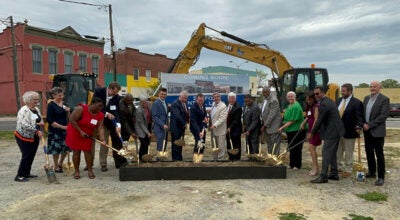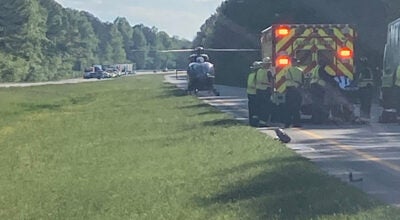Feedback wanted on possible bridge replacement
Published 8:08 pm Thursday, October 29, 2020
|
Getting your Trinity Audio player ready...
|
Barry Hobbs was opposed to rebuilding the Kings Highway Bridge more than a decade ago after the old span was torn down.
He’s still opposed to a span that would cross the Nansemond River and go at the original site, but he does support an alternative location for a new bridge.
Hobbs was one of a few people who turned out for an outdoor public information meeting at John Yeates Middle School Oct. 27 to solicit input on whether a new bridge should be built. Another such meeting originally scheduled for Oct. 28 at the entrance to Lone Star Lakes Park has been postponed until Nov. 10 at the same location.
“I was against replacing the old bridge,” Hobbs said. “It didn’t make much sense. Basically, it’s a bridge from Driver to Chuckatuck. And you don’t have any way around Chuckatuck if you get on the other side of the bridge that I can see, and so it didn’t make any sense to spend all that kind of money and build this big monstrosity bridge.”
City officials put forth three options for people to consider — a bridge on the original road alignment, another that would have an alignment along Five Mile Road between Godwin Boulevard and Kings Highway, located about a half-mile upstream and having traffic bypass the village of Chuckatuck, or a choice not to build one.
The two build options provided come in two sizes — a 65-foot tall span and a 35-foot tall span. Hobbs favors building a new Kings Highway Bridge with an alignment along Five Mile Road.
“I think that makes sense,” Hobbs said, “because if you could get around Driver, then it could be a main thoroughfare of exiting going west from Hampton Roads besides (U.S. Route) 58.”
The original Kings Highway Bridge was built in 1928 as a 2,540-foot, double swingspan drawbridge connecting the villages of Chuckatuck and Driver in the city. The bridge was a privately owned toll facility until the Virginia Department of Transportation purchased it for $1 million in 1963.
The bridge was rehabilitated in 1985, closed for safety reasons in 2005 and demolished in early 2008.
Two years ago, the Hampton Roads Transportation Planning Organization commissioned a regional bridge study that noted the $60 million cost of building a new bridge — according to city estimates cited in the study — and that it was not eligible for State of Good Repair funding. It was also not included in what the agency stated was “the fiscally constrained” Hampton Roads 2040 Long-Range Transportation Plan, though it is in the region’s 2040 Regional Transportation Vision Plan.
Last year, City Council’s 2020 legislative agenda called for the General Assembly to address nine transportation deficiencies in the city, including the replacement of the old bridge.
Roger Fawcett, who represents the Driver area as the Sleepy Hole Borough representative on council, said discussing options for a possible bridge is a good idea.
“I think we just need to know what people want, and what they don’t want, and then we just need to take it one step at a time and see in the future if it’s ever going to develop into something,” Fawcett said. “I think everyone needs to just watch and wait and see what happens, because I’m not sure, in my opinion, whether, or where we would get this money.”
Estimates to build a new Kings Highway Bridge range from close to $140 million to more than $204 million, according to information provided at the public meeting, assuming the bridge was built in 2030. However, there is no funding source for building a new bridge, and in order to determine how a new bridge would be paid for, the city first has to determine whether residents want a new span, and if so, where.
Public Works Director L.J. Hansen said it is important to get the public’s feedback before determining whether to proceed on plans for a bridge.
Following the public information meetings and getting comments back from the public, he said the feedback would be presented to City Council likely in December or January to get their feedback to determine how to move forward.
“We don’t have a funding stream identified at this point,” Hansen said, “but in order for us to secure that funding, we have to know what people’s preferences are.”






